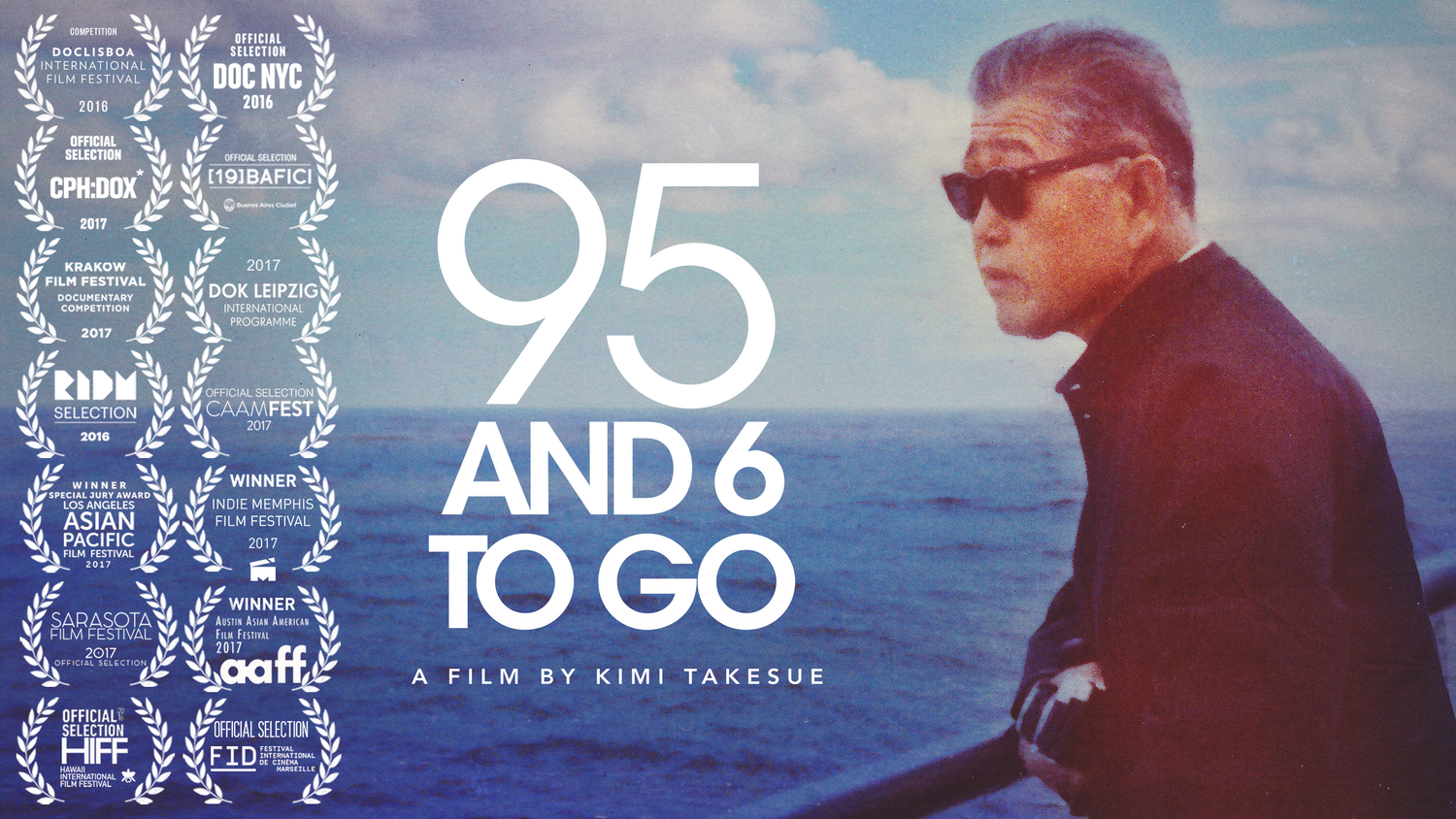Life at an old age may come off as dull. One’s body does not move the way it used to, and connections with relatives may have dwindled. However, this is not the case for Tom Takesue, whose tenacious will to carry on shines through in “95 and 6 to Go.”
The film follows filmmaker Kimi Takesue’s grandfather Tom in his daily life as a retired postal worker in Honolulu, Hawai’i. The film was screened by the Asian American Theater Project (AATP) on April 9 and was followed by a Q&A session with Kimi Takesue. Kimi wrote, edited and produced the film, which included shots gathered over six years. From the start, the film presents itself as simultaneously quiet and loud. Scenes are simple, though they speak to how Tom operates; we are immersed in his thoughts, in a way.
The film employs simple cinematography as a smaller aspect ratio is used. This lets us focus on the film’s star, Tom. Additionally, Kimi sprinkles crisp scenic views of Hawai’i that serve as transitions between scenes. These scenic views somewhat form their own storyline; they paint an overarching timeline with daytime scenes placed at the beginning and evening scenes placed toward the end. This detail is effective because it mirrors Kimi’s act of following Tom around.
There are multiple stories in the film: the one told by the camera, the script read by Tom, the one suggested by Tom, family history and broader U.S. and world histories. This multivalence is admirable because each storyline illuminates aspects of the main story behind Tom.
The script read by Tom stood out to me the most. While watching the film, I thought Kimi wrote the script as a way to motivate her grandfather to tell his story and those of relatives. During the Q&A, Kimi explained that the script Tom reads was in fact a real script she had written for a different film she was working on at the time. To clarify, “95 and 6 to Go” was not a planned film. It is an impromptu film in the sense that nothing was rehearsed. Kimi was spending time with her grandfather and decided to film him for the sake of capturing these moments. She mentioned during the Q&A that she did not realize these recordings created a cohesive story until she viewed them later on, at which point she switched her focus from producing the script Tom was reading to refining this new story. Kimi said this film “emerged from the ashes” of the other.
As the story progresses, Tom loosens up and leans into being filmed. He demonstrates more interest in Kimi’s script and even provides suggestions for revision.
The film is candid. Audiences are immersed in Tom’s everyday life as he watches television, eats his meals and takes care of his home. We even see his stocked freezer and refrigerator in the film. During the Q&A, Kimi shared that Tom really enjoys eating, which is frequently featured in the film.
Determining how to fill solitude or what remains of life is a running theme in the work. Tom reflects on photographs of his wife’s funeral, indicating nostalgia and a longing to return to simpler, less solitary times.
Simple happy moments help fill this void. Humor is tangibly present within these candid moments. Two of my favorite scenes include one in which Tom is sorting through coupons and another in which Kimi tapes Tom as he lights fireworks on New Year’s Eve. These scenes are humorous because they let us in on the playful relationship between Kimi and her grandfather.
Through the coupon scene we see how stagnant his life can be, especially as he sorts through advertisements with the television running in the background. Here, Tom considers buying a consumer magazine subscription but decides not to after Kimi asks him what he would buy. He sits with the question for a bit and chuckles as he tries to answer the question. Perhaps Tom believed subscribing would allow him to “feel something” as we contemporarily put it. This reminds me of the increase in online purchases at the start of the pandemic.
The firework scene is pure. It displays Tom’s spiritedness, even at his age. He is still inclined to celebrate the holiday by lighting fireworks as he warns Kimi, who can be heard laughing as she tapes, to stand back. One of the fireworks lights well, prompting Tom to scuttle to safety to which Kimi lightheartedly laughs at. This diegetic sound reinforces the bond the two share and paints a picture of playfulness between grandparents and their young grandchildren. It is a simple and refreshing scene.
“95 and 6 to Go” is powerful because it encapsulates the strong bond felt across generations. Ultimately, Tom does not approve of Kimi’s decision to pursue a filmmaking career. However, despite this tension, they share sentimental conversations, and at other times, more lighthearted ones.
Kimi Takesue’s tender film shows us that our elders are wise with stories to tell. Sometimes all they want is a listening ear. It leaves the audience with a realization that time with our elders is precious, and that perhaps we should spend more time with them while they are still around.
